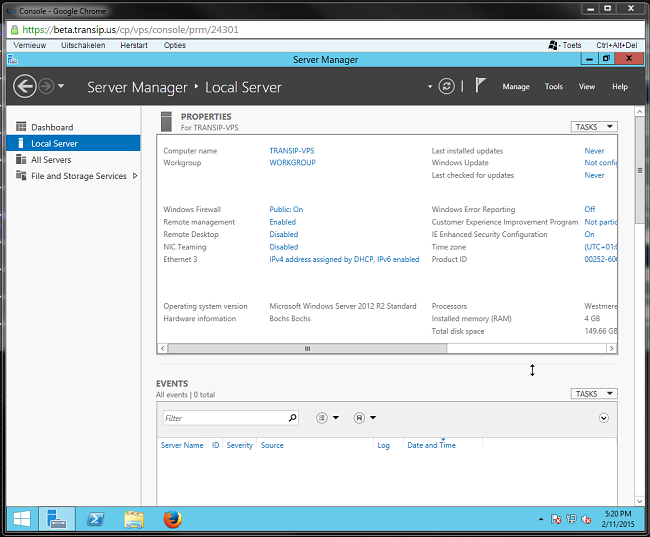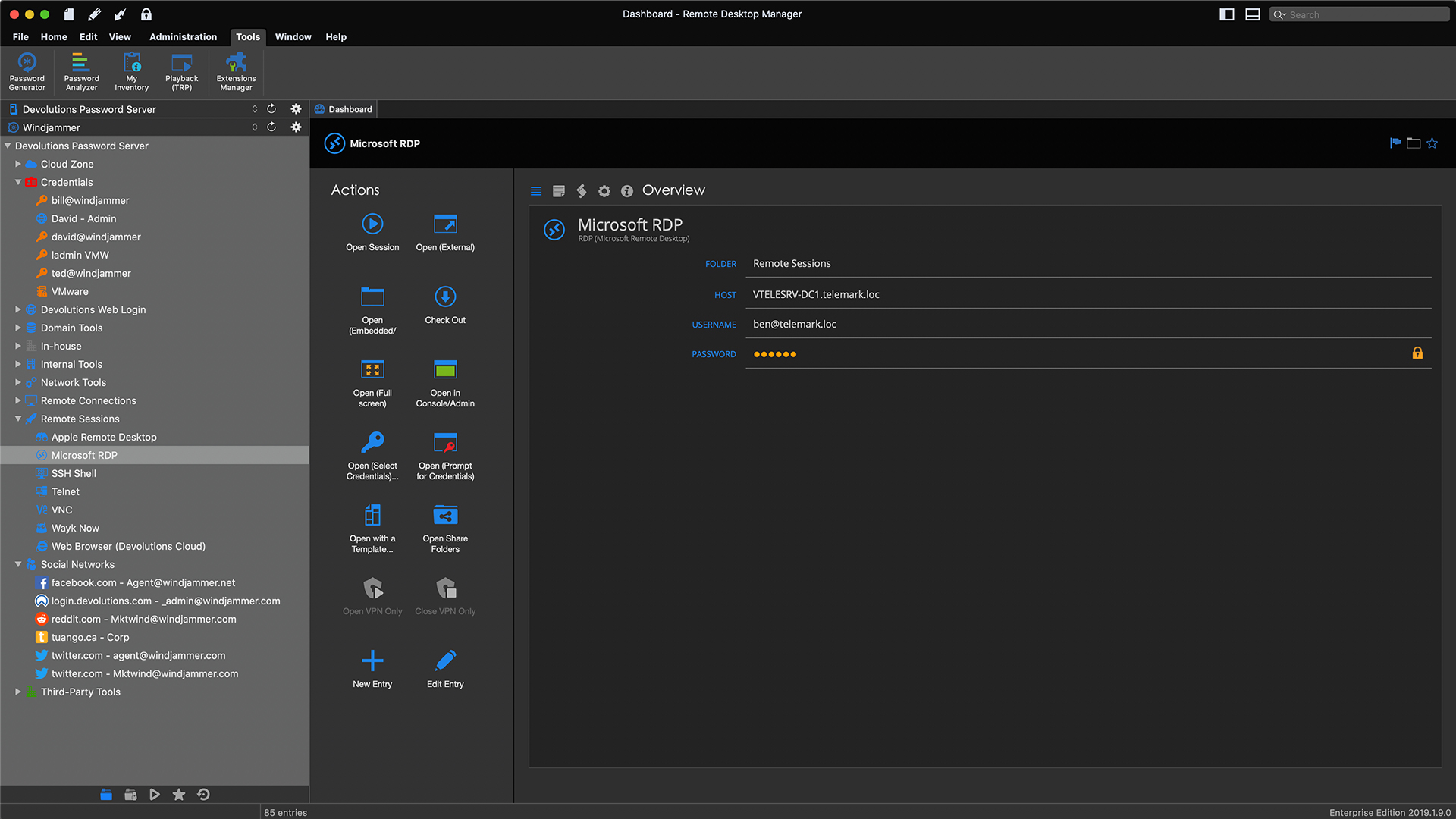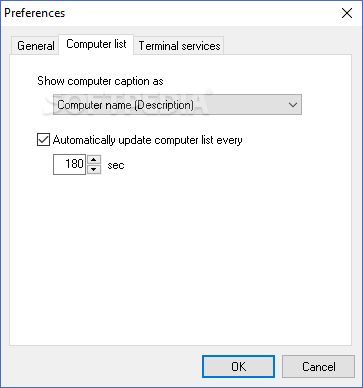Windows Admin Center is a locally deployed, browser-based app for managing Windows servers, clusters, hyper-converged infrastructure, as well as Windows 10 PCs. It comes at no additional cost beyond Windows and is ready to use in production. This is what it says on the official Microsoft Docs page of Windows Admin Center. Enable Terminal Server/Multiple RDP Sessions on Windows 10 Posted on July 26, 2018 February 21, 2020 by Udhy I got up a requirement to setup Windows 10 in a cloud from where we want to have concurrent users on it at the same time. Before talking about Windows 10 services to disable, we will show you something useful like where to see the Windows 10 services you have and their states: Search for services.msc in the search box and press Enter to open it. Then, you will see the Component Services window. Click Services (Local) and you can see all the Windows 10 services on.
- Windows 10 Terminal Services Manager Tutorial
- Automatically Sign Up To The Servers And Storage Newsletter
- Terminal Server Manager
- Windows 10 Terminal Services Manager
Advanced Remote Desktop Sessions Manager and Monitoring System
Terminal Services Manager shows which user is connected to the remote host, what processes they are running, and how much of the server resources (CPU and memory) they are using. You can send users messages, disconnect them from the server, or connect to their sessions remotely.
With Terminal Services Manager you can send bulk messages to users, disconnect idle users, and end sessions of multiple disconnected users simultaneously. Terminal Services Manager allows you to work with several hosts at once.
Terminal Services Manager displays information in both table form and by drawing graphs of the usage of CPU, memory, and other resources over time for each server, session, and user.
Key features
- Viewing users, sessions, and processes running on a remote host
- Monitoring the resource usage of remote hosts per user, session, or process (CPU usage, Memory usage, Incoming and Outgoing bytes, Handles, Number of processes, etc.)
- Managing users:
- Connect to a user session
- Disconnect a user from a session
- Log off a user from a session
- Batch log off or disconnect from the server all, idle or disconnected users
- Remotely control a user session
- Sending a message to a selected users
- Ending a process that is running
- Audit users activities
- Monitoring failed logon attempts
Getting started with Terminal Services Manager
The best way to get started with Terminal Services Manager is to try it, no strings attached. We are so confident that you will have a great user experience with our software that we offer Terminal Services Manager in a fully-functional trial package. Click here to download your fully-functional trial of Terminal Services Manager . The Terminal Services Manager is free for personal use. Need for business use? LizardSsystems Software has a simple pricing. Please visit our pricing page for further information.
Last updated on February 27th, 2020
This article contains step by step instructions on how to install and configure the Remote Desktop Services on a Windows Server 2016 or 2012. In Windows Server 2016 & 2012 the Terminal Services role has been replaced by the Remote Desktop Session Host (RDSH) role service and is part of Remote Desktop Services (RDS). A Remote Desktop Session Host (RDSH) server, provides to remote users the ability to access the applications on the RDS host server and the company resources from anywhere by using an RDP client.
In this tutorial you 'll learn how to setup and configure a Windows Server 2016 or 2012 as a Remote Desktop Session Host (Terminal) server, in order to provide remote desktop sessions, based on the number of Remote Desktop Services client access licenses (RDS CALs) installed on the RDSH server.
How to Setup and Configure a Windows Server 2016/2012 as a Remote Desktop Session Host Server (Terminal Server).
Notes:
1. The mentioned steps below, can be applied either on a Domain Controller or in a standalone server 2016/2012.
2. If the Terminal services are installed on a server that will act as a Domain Controller also, then first install the Active Directory Domain Service (AD DS) role service and promote the Server to a Domain Controller, before installing the Remote Desktop Session Host (RDSH) role service (Terminal Service).
3. Keep in mind that the below configuration does provide access to RemoteApp programs or the RDWeb site, because the Remote Desktop Connection Broker role service will not be installed.
Step 1. Install Remote Desktop Services on Server 2016/2012.
Step 2. Activate the Remote Desktop License Server.
Step 3. Install Licenses on the Remote Desktop License Server.
Step 4. Configure RD Session Host role to use the local Remote Desktop Licensing server & Set the Remote Desktop licensing mode.
Step 5. Add RD Clients (Users) to the Remote Desktop Users Group.
Step 6. Allow the log on through remote desktop Services.
Step 1. Install Remote Desktop Licensing and Remote Desktop Session Host role services.
1. Open 'Server Manager' and click on Add Roles and Features.
2. At the first screen of 'Add Roles and Features wizard' leave the Role-based or feature-based installation option and click Next.
3. At the next screen, leave the default option 'Select server from the server pool' and click Next.
4. Select the Remote Desktop Services and click Next.
5. Leave the default settings and click Next at Features and Remote Desktop Services screens.
6. At Role Services screen, select the Remote Desktop Licensing role service and then click Add Features.
7. Then select the Remote Desktop Session Host role service and click Add Features again.

8. When done, click Next to continue.
9. Finally click Install to install the Remote Desktop Services: Remote Desktop Licensing and Remote Desktop Session Host.
10. When the installation is completed close the 'Add Roles and Features Wizard' and restart your server.
Step 2. Activate the Remote Desktop License Server.
1. Simultaneously press the Windows + R keys to open run command box.
2. Type licmgr.exe and press Enter to open the RD Licensing Manager *
* Note: Alternately, you can launch the RD Licensing Manager, from Control Panel –> Administrative Tools –> Remote Desktop Services –> Remote Desktop Licensing Manager.
3. At the right pane, right click on the server name and select Activate Server.
4. Click Next at the Welcome screen and then click Next again at Connection method options.
5. At 'Company Information' window, fill the required fields and click Next twice to activate your License Server.
6. When the activation is completed, leave checked the 'Start Install Licenses Wizard' checkbox and click Next.
7. Continue to next step.
Step 3. Install Licenses on the Remote Desktop License Server.
1. At 'Welcome to the install licenses wizard', click Next
2. On the License Program page, select the appropriate program through which you purchased your RDS CALs, and then click Next.
3. According the License Program you selected on the previous page, type either the license code or the agreement number provided when you purchased your RDS CALs and then click Next.
4. On the Product Version and License Type page, select the appropriate product version, license type, and the quantity of the RDS CALs based on your RDS CAL purchase agreement, and then click Next.
5. When the RDS CALs installed on the server, click Finish. *
TIP: If you cannot activate the RDS Server automatically, then try to activate it using the Web Browser or via Telephone. To do that:
a. Right-click on the Server's name and select Properties.
b. Change the Connection Method to Web Browser or to Telephone.When done, click OK.
c. Finally, right click on the server name, select Activate Server and follow the onscreen instructions to completed the activation.
Step 4. Configure RD Session Host role to use the local Remote Desktop Licensing server & Set the Remote Desktop licensing mode.
1. Open Group Policy Editor. To do that:
1. Simultaneously press the Windows + R keys to open run command box.
2. Type gpedit.msc and press Enter.
2. In Group Policy Editor navigate to:
- Computer ConfigurationAdministrative TemplatesWindows ComponentsRemote Desktop ServicesRemote Desktop Session Host Licensing
3. At the right pane, double click at Use the specified Remote License Servers.
4. Click Enabled, and then at 'License server to use' field, type the RDS license server name and click OK.

5. Then open the Set the Remote Desktop licensing mode setting.
6. Click Enabled and then specify the licensing mode (Per User or Per Device) for the RDS host server and then click OK again.

7.Close Group Policy Editor.
8. Verify the RD Licensing configuration, by going to: Windows Control Panel –> Administrative Tools –> Remote Desktop Services –> RD Licensing Diagnoser.
Step 5. Add RD Clients (Users) to the Remote Desktop Users Group.

1. Open Server Manager.
2. From Tools menu, select Active Directory Users and Computers. *
* Note: If the RD Session Host Service is not installed on the Domain Controller, use the 'Local Users and Groups' snap-in or the 'Remote' tab in the 'System Properties' on the RDS host server, to add the remote desktop users.
3. Double click at your domain on the left and then select Builtin.
4. Open Remote Desktop Users on the right pane.
5. At Members tab, click Add.
6. Type the name(s) of the users that you want to give Remote access to the RDS Server and click OK.
7. After selecting the remote desktop users, click OK again to close the window.
8. Continue to step-6 below.
Step 6. Allow the log on through remote desktop Services.
1. Open the Local Group Policy Editor. To do that:
1. Simultaneously press the Windows + R keys to open run command box.
2. Type gpedit.msc and press Enter.
2. In Group Policy Editor navigate to: Computer Configuration > Windows Settings > Security Settings > Local Policies > User Rights Assignment.
3. At the right Pane: double click at Allow log on through Remote Desktop Services.
4. Click Add User or Group.
5. Click Object Types, check all the available objects (Users, Groups, & Built-in security principals) and then click OK.

6. Type remote desktop users and then click OK.
7. Finally click OK again and close Group Policy Editor.
Windows 10 Terminal Services Manager Tutorial
8. Now you 're ready to connect to the Remote Desktop Session Host Server 2016/2012 from any Remote desktop client.
That’s it! Let me know if this guide has helped you by leaving your comment about your experience. Please like and share this guide to help others.
Automatically Sign Up To The Servers And Storage Newsletter
We're hiring
Terminal Server Manager
We're looking for part-time or full-time technical writers to join our team! It's about a remote position that qualified tech writers from anywhere in the world can apply. Click here for more details.
Windows 10 Terminal Services Manager
Full household PC Protection - Protect up to 3 PCs with NEW Malwarebytes Anti-Malware Premium!
